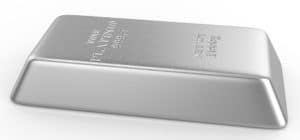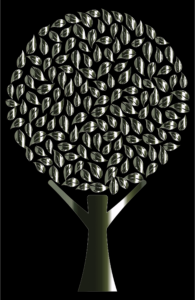
Despite being one of the world’s most precious metals, many people don’t know where Platinum comes from. In this blog post, we’ll take a look at the history and origins of Platinum.
So, get ready to learn more about this fascinating metal.
When it comes to investing, platinum is often overlooked in favour of gold, and other precious metals. However, there are several benefits to investing in platinum, which makes it a wise choice for those looking to protect their wealth.
We will also go over the reasons why you should consider adding platinum to your portfolio.
Where Does Platinum Come From?
Platinum is a dense, malleable and ductile member of the platinum group metals family (PGM).
It’s one of the least abundant elements in our planet’s crust at around 0.005 parts per million (ppm), putting it on par with mercury and silver – which isn’t much! For comparison, gold has an abundance of 0.003 ppm.
Platinum forms in stars by nuclear fusion, and is found most commonly as traces within ores of other platinum group metals – which include ruthenium, rhodium, palladium and iridium.
These four rare earth elements are called the platinum group metals (PGMs) because they all exhibit similar chemical properties and share many characteristics.
They are all very corrosion resistant and can withstand extreme conditions, colourless, extremely hard with low electrical conductivity, which makes them difficult to refine.

Platinum’s Family Tree
Platinum’s family tree Platinum belongs to the transition metals, but not all transition metals are members of the platinum group metals.
It just so happens that molybdenum and manganese also form part of PGMs. Strictly speaking, therefore, they’re also ‘transition metals’.
Like gold, silver and copper, platinum forms native (pure) deposits where it’s found in its metallic form.
It also appears within ores of other PGMs as well as veins of placer sands.
However the latter instance is rarer than one might think since platinum isn’t typically found in large enough concentrations for mining to be economically viable.
How Much Platinum Is There?
Estimates vary, but world supply probably hovers around 30 metric tonnes per year, which seems like very little when you compare it to iron ore production at 2 billion tonnes or even gold at 2500 tonnes.
On the other hand, the new fuel cell technologies are good for platinum because it’s a major component of automotive catalysts.
This will drive demand up, so it could be that the price of platinum rises again in the future, increasing supply as it does so.
Where is Platinum Found?
Platinum is found in South Africa, Russia, North America and Ghana with almost all being sourced from placer deposits within rivers where it forms microscopic grains, which are then concentrated by washing away lighter elements in the ore.
As demand continues to increase so too will prices making mining for new sources economically viable once again. Platinum can also be recycled but only around 50% of material is recovered so recycling will never supply 100% demands.
What’s The History Of Platinum?
Platinum was first discovered in Colombia and brought to Europe in the late 16th century by Spanish conquistadors.
As with most metals of this period, it was viewed as more of a curiosity rather, than a useful material.
It wasn’t until 100 years later that platinum was used as a currency when Spanish pieces-of-eight began circulating as coins in Africa.
In 1735, French geologist Pierre Berthier found alluvial deposits on some nickel mines he managed near the modern day town of Asunción , Paraguay.
This find sparked an initial rush where over 4000 kg were recovered from these alluvial deposits. However after 30 years had passed interest died down considerably.
As is often the case with natural resources, political upheaval has a big effect on production levels.
In the case of platinum, it wasn’t until after World War II that South Africa experienced a new found interest in the metal when demand for PGMs started to increase.
This, in turn, helped kick start another wave of exploration and expansion within this field, which has seen considerable growth in output ever since.

So where does all this platinum go? As with many metals there’s more use for PGMs than simply making jewellery. It turns out these metals can be used in many different ways:
 Catalysts – These are substances whose involvement doesn’t actually change the course or outcome of a chemical reaction but still manages to speed up said process. Platinum is used as a catalyst because it attracts several non-metallic elements to its surface where they then take part in a chemical reaction. These include hydrogenation, dehydrogenation and oxidisation reactions. Catalysts – These are substances whose involvement doesn’t actually change the course or outcome of a chemical reaction but still manages to speed up said process. Platinum is used as a catalyst because it attracts several non-metallic elements to its surface where they then take part in a chemical reaction. These include hydrogenation, dehydrogenation and oxidisation reactions.
P For example, white gold would otherwise be a very pale yellow colour if it wasn’t tinted with alloys containing PGMs.
In fact, as little as 1 part per million is enough to reduce corrosion by 90%. This makes it perfect for use as electrodes within fuel cells, which have water molecules on their surface. |
3 More Reasons To Invest In Platinum
The growing demand
The price of platinum-based products is dependent on the demand, which has been progressively increasing over time. Thus, forecasts are that in 2021, the average annual growth rate will be 6.5% compared to 2018.
Also the growing demand of platinum in smartphones and other hi-tech products is expected to drive the demand in platinum up by about 30% over the next four years.
The Price Of The Raw Material
The more general aspect is that the price of platinum can rise if there are shortages in the market, whatever their origin (a political crisis, an economic context). And we can be sure that this will happen in 2021 since there is a strong risk of shortage on the raw materials market.
Indeed, India and other countries such as Russia or China are increasing their production of platinum to sell to other countries, but especially to produce themselves.
This leads them to hoard the metal and thus prevent its resale on the global market.
On our 10 years predictions for platinum, we can indeed expect a price increase of the raw material over time.
We should also take into account that China is the world’s largest producer of platinum (40% in 2016, versus 30% for Russia or 20% for South Africa).
The Context Which Favours Platinum
Since the early 2000s, platinum has been relatively stable.
The price of this metal is therefore expected to rise in the direction of other commodities, such as oil or natural gas, which display higher volatility than usual.
Indeed, since the beginning of 2018, it is possible to observe that prices are beginning to rebound. Thus, it seems logical to consider investing in platinum for 2022.
Should I Invest In Both Gold and Platinum?
A lot of people think that investing in platinum is a better option than investing in gold.
However, when it comes to precious metals like gold and platinum, there’s no cut and dry answer to this question. Each one has its own merits.
Gold and platinum both work as good ways for holding their value over time and we know they won’t depreciate in a big way overnight even if the economy tanks.
Gold has always been seen as an inflation barometer that gives you security, but platinum is just emerging as a good alternative to gold. It is unlikely that your investment will depreciate to a great extent over the coming years.
With new demand from small countries like Japan and Thailand entering the market, Platinum has been doing well over a longer period of time.
Platinum tends to trade at a higher price per ounce than gold does. Platinum also has a higher trading volume and liquidity which means that if you need to sell your investment, you will be able to do so without too much difficulty and at the right price.
If you invest in Gold and Platinum in 2022, you can get a much better deal on them than if you were to invest in the same later. This is one reason why it is good to invest early, even though the initial investment might go up slightly.
Below are the Top 4 Precious Metal firms that we have chosen, as being amongst the most reputable Gold IRA companies in the industry.
Click here to read our reviews

|
The Bottom Line
This article has shown its readers why Platinum can be a good investment for 2022. However, it is important to remember the risks involved in the futures market.
Platinum is a valuable resource that should be considered when investing in precious metals.
It has many benefits that make it an attractive investment option.
With the current market conditions, platinum may be a wise choice for your portfolio. If you are looking for a safe investment with high potential returns, platinum should be high up on your list.



